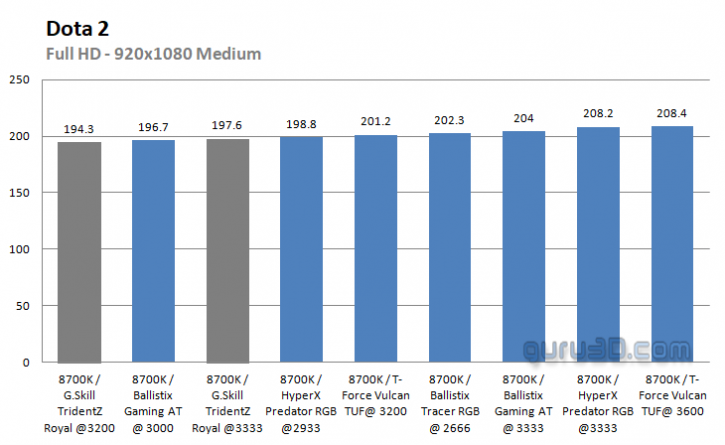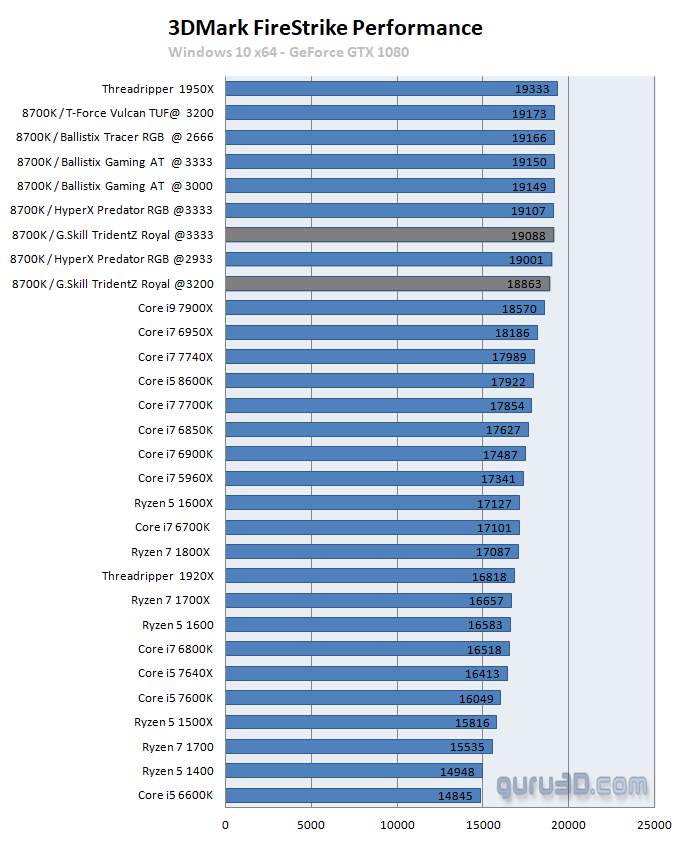Performance Games - Dota 2 / FireStorm
Performance - DOTA 2 (DX11)
We'll start with a massive online multiplayer game at 1920x1080, our choice is DOTA 2. While the majority of the time players might be running around alone, slaying creeps and heroes alike, the worst-case scenario in a game of Dota 2 usually is a large-scale teamfight. This fight pushes the CPU and GPU to the maximum: Massive amounts of hero models, hats, particles and spells flying around and dropping the framerate.
For DOTA 2, just one resolution. The game, as we already discussed in the past, is extremely susceptible towards CPU and memory changes when the game is in a CPU limited environment. The quick to render game was tested pretty much at medium (integrated graphics) quality settings. Hence the difference is measurable.
Performance - Games - GeForce GTX 1080 - 3DMark FireStrike
3DMark includes everything you need to benchmark your hardware. With three all new tests you can bench everything from smartphones and tablets to notebooks and home PCs, to the latest high-end, multi-GPU gaming desktops. And it's not just for Windows. With 3DMark you can compare your scores with Android and iOS devices too. Here (below) are 3DMark FireStrike results. FireStrike is the showcase DirectX 11 benchmark designed for high-performance gaming PCs.




